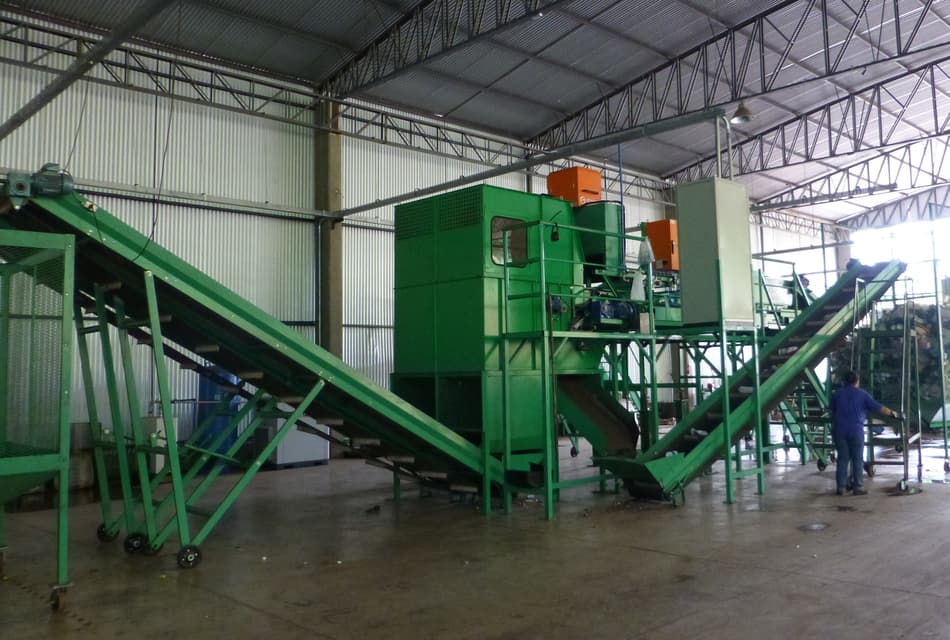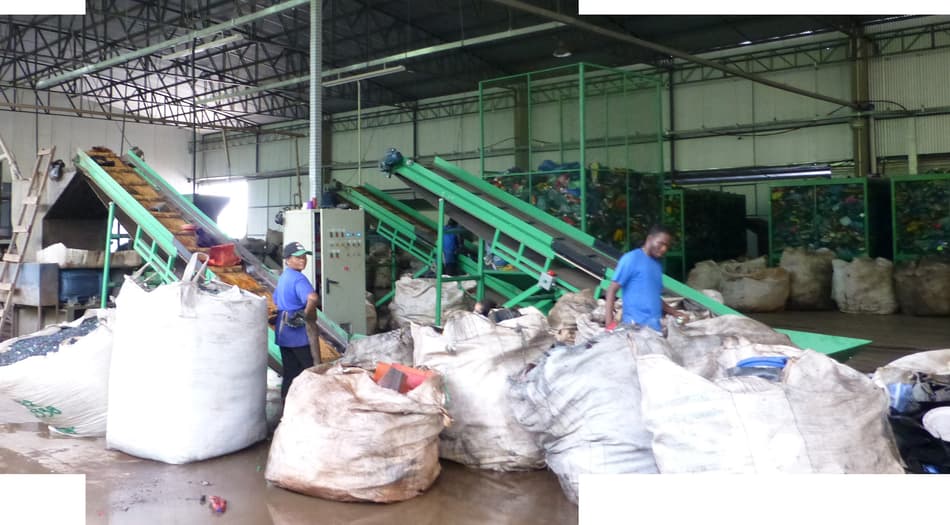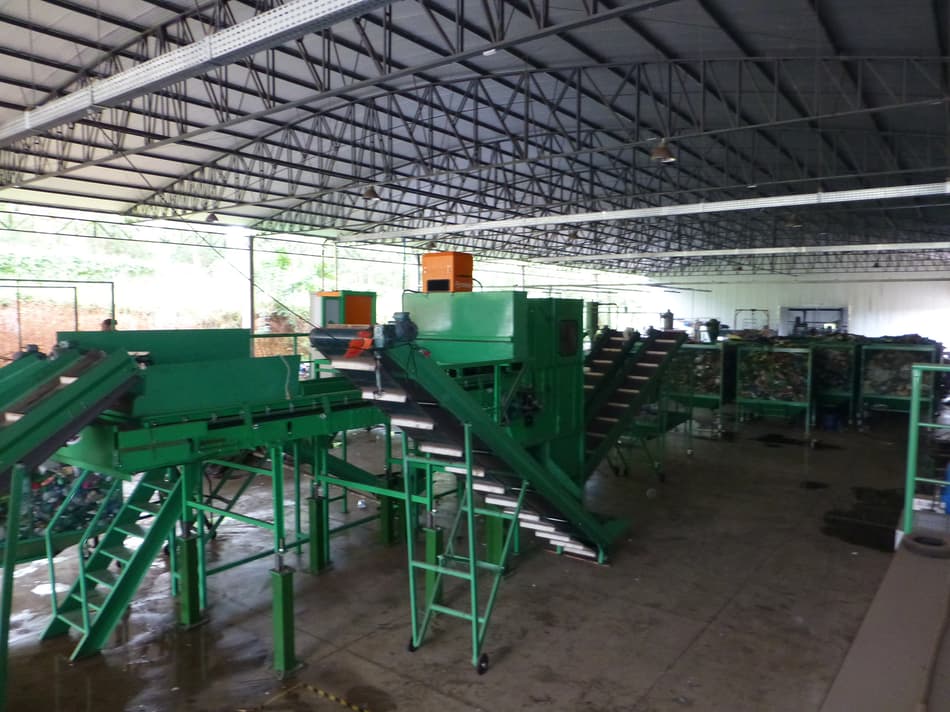
Upgrading of plastics with AUTOSORT at Balsamo Reciclagem, Brazil
Balsamo Reciclagem boots its productivity with TOMRA´s Sorting technology
OVERVIEW
Balsamo Reciclagem upgraded its plant with the installation of the innovative AUTOSORT® optical sorter. Thanks to this equipment, the company managed to increase material processing speed and amount, boost productivity, offers a wider range of products and reduces operational and maintenance costs.
SITUATION
Balsamo Reciclagem (Balsamo Comércio de Plástico Reciclados Ltda.) has its plant located in Balsamo, in the Brazilian state of São Paulo. It offers extrusion services, with wide-ranging solutions for high-quality recycled resins and thermoplastics for different market segments.

After over 10 years of experience in processing recyclable plastic materials for the production of HDPE (High-Density Polyethylene) and PP (Polypropylene) resin, Balsamo Reciclagem started an upgrading process that reached its climax with the opening of its new plant in January 2013. It moved from manual sorting of materials to the use of a sensor-based sorting equipment, TOMRA Sorting’s AUTOSORT®, a system featuring the most advanced technology in the market, capable of sorting all kinds of polymers, including by color.
Balsamo Reciclagem acquired the new AUTOSORT® 1400 after seeing it in action at an exhibition in Belo Horizonte, where the testing of materials it processes was also conducted. The new machine was quickly put into operation, which constituted a big change for the productive process of the plant.
EXPERIENCE
“The equipment has brought about a great productivity boost, since it created the necessary conditions for an excellent recovery. It was impossible to get such a result with manual sorting. Indeed, we had already tried several ways of manually sorting, with low productivity and unsustainable results because there was a bottleneck at the start of the process”, says Marcilio Patriani, Balsamo Reciclagem's joint owner.
“The optical equipment allows for the combination of manual and mechanical sorting, and now only part of the material – the larger objects – is manually prepared to be processed in the machine”, he explains. It is important to highlight that a large portion of the hired workers for the sorting operations are female inmates from the local penitentiary, serving the final months of their prison term. After the integration of the AUTOSORT®, these workers adapted perfectly to the new way the plant was running, taking up other roles and performing easier procedures.
Productivity increase and greater availability of raw material
When all the sorting was done manually, the plant used to have an output of less than 3t/day. Besides, there was a bottleneck that limited subsequent operations, namely, washing, grinding and extrusion of the material. The company had no choice but to buy already ground material – usually of low quality – from external sources in order to feed the extrusion process and make it profitable, since it must run 24 hours a day. Now, thanks to the installation of the new optical sorter, 1 ton of material is processed per hour and the grinding and extrusion capacity was increased so that all of the recovered material is processed.
The result, in addition to the outstanding productivity boost, is greater autonomy and control of the ground material distribution as well as greater fluidity of the extrusion process.

“Initially, we operated with a grinder that wasn't used every day, but today we operate with two grinders running full time and we're having the installation of a third grinding line almost finished,” the company owners say. And they add: “Currently, we're getting about 11 tons per shift, and working only one shift. By using the AUTOSORT we saw a 90% increase of material for grinding, and the system is not yet being used to the full”.
Sorting by color
There was also a particular feature in Balsamo Reciclagem's business: the need for sorting material by color, in order to considerably reduce the eventual resin tinting. Rafael Escudeiro, TOMRA´s Field Service Engineer, responsible for the project start-up explains: “Color is a particular need for the Brazilian market. In Europe, only white, black and natural are used; however, the flexibility of TOMRA's Sorting equipments and their wide-ranging spectrogram has made possible to adapt to specific needs of the client, enabling the company now to process material by color groups, save on pigments, broaden its product range and meet the great demand for pure material”.

Reduced maintenance tasks are another advantage of the new work system, bringing significant savings to the client as well as reduced operating costs. As Rafael Escudeiro confirms, “maintenance is very simple. A daily cleaning is needed and the client himself performs a very simple calibration once a month”
PROCESS
The process performed by the AUTOSORT® 1400 optical sorter at the Balsamo Reciclagem plant is as follows: First, the HDPE caps and labels of the containers are removed; then this material goes through the optical sorter, which, initially, sorts out other plastics from HDPE. Afterward, HDPE goes through the optical sorter again, which separates it by color groups: white, natural, green, blue, red and black. After that, it is ready for grinding, washing and finally for the extrusion, that produces the resin. The process for PP is similar, except that it does not need to go through the equipment that removes labels and caps, and it is cut manually into smaller fractions. Inadequate materials are likewise removed.
